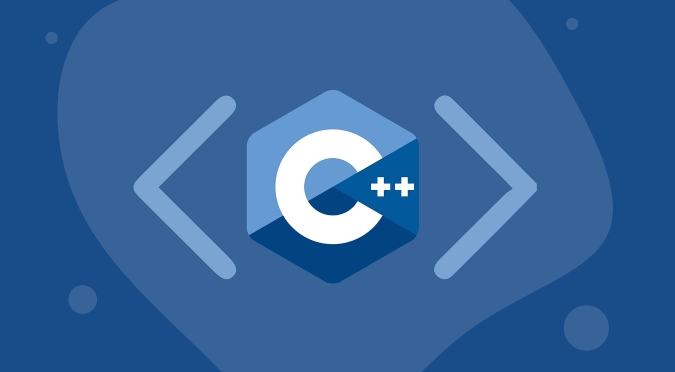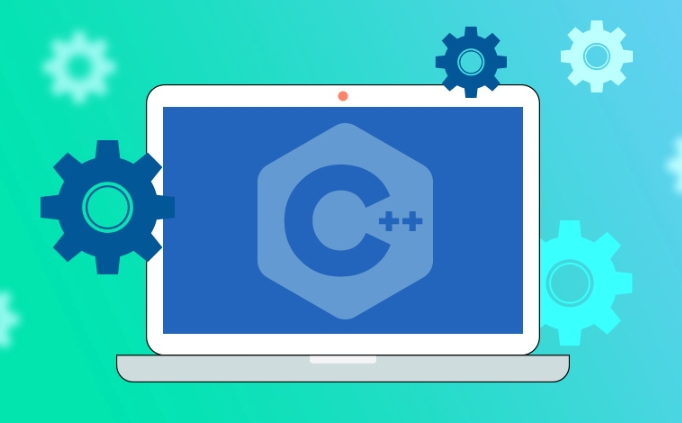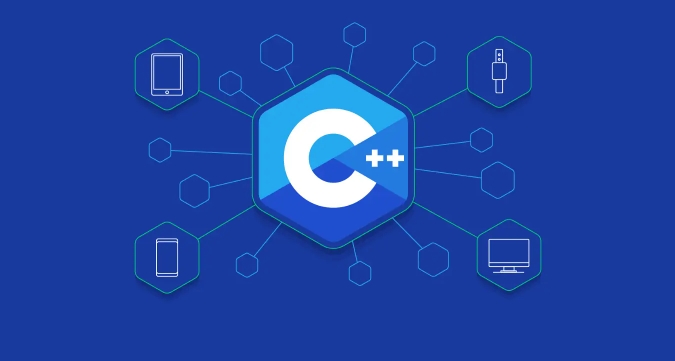Header guards solves the problem of compilation errors caused by duplicate inclusion. They ensure that the header file contents are processed only once in each compilation unit through preprocessor instructions. The specific steps are: 1. #ifndef check whether the macro is undefined; 2. If it is not defined, use #define to define the macro; 3. The content of the header file is located between the two; 4. #endif end condition judgment. Modern compilers also support the non-standard but widely used #pragma once. Best practices include consistent naming, correct placement, no assumption of uniqueness, and avoiding manual copying of macro names. Using header file protectors can effectively avoid compilation errors in repeated definitions of symbols.

C header guards are a technique used to prevent multiple inclusions of the same header file during compilation. This is important because including the same header multiple times can lead to duplicate definitions and compilation errors.

What Problem Do Header Guards Solve?
When you include a header file in C , the preprocessor essentially copies the contents of that file into your source code. If the same header is included more than once, this can result in duplicate declarations or definitions, which the compiler will flag as errors. For example, if two different headers both include a common header without any safeguards, you might end up with duplicate class or function definitions.

Header guards solve this by ensuring that the contents of a header file are only processed once per compilation unit.
How Do Header Guards Work?
Header guards use preprocessor directives to conditionally skip the contents of a header file if it has already been included. Here's how they typically look:

#ifndef MY_HEADER_H #define MY_HEADER_H // Contents of the header file go here #endif // MY_HEADER_H
Here's what each line does:
-
#ifndef MY_HEADER_Hchecks if the macroMY_HEADER_Hhas not been defined yet. - If it hasn't,
#define MY_HEADER_Hdefines the macro, marking this header as included. - The actual content of the header (like function declarations or class definitions) follows.
-
#endifcloses the conditional block.
The next time this header is included, the #ifndef check fails, so the entire content between it and #endif is skipped.
Some modern compilers also support #pragma once , which serves the same purpose but isn't part of the official C standard—though it's widely supported.
Best Practices for Using Header Guards
- Use consistent naming : Choose a naming convention for your guard macros to avoid conflicts. A common pattern is to use the filename in uppercase with underscores, like
MY_HEADER_H. - Place them correctly : Make sure the
#ifndef,#define, and#endifwrap the entire header content, including any comments before#ifndef. - Don't assume uniqueness : Even if you think a header won't be included multiple times, always add a guard—it's a small effort that prevents future issues.
- Avoid manual copy-pasting of guards : It's easy to make a typo when copying the macro name at the
#endif, which can silently break the guard logic.
Using header guards consistently helps keep your C projects clean and avoids frustrating duplicate symbol errors during compilation.
Basically that's it.
The above is the detailed content of What are C header guards?. For more information, please follow other related articles on the PHP Chinese website!

Hot AI Tools

Undress AI Tool
Undress images for free

Undresser.AI Undress
AI-powered app for creating realistic nude photos

AI Clothes Remover
Online AI tool for removing clothes from photos.

Clothoff.io
AI clothes remover

Video Face Swap
Swap faces in any video effortlessly with our completely free AI face swap tool!

Hot Article

Hot Tools

Notepad++7.3.1
Easy-to-use and free code editor

SublimeText3 Chinese version
Chinese version, very easy to use

Zend Studio 13.0.1
Powerful PHP integrated development environment

Dreamweaver CS6
Visual web development tools

SublimeText3 Mac version
God-level code editing software (SublimeText3)

Hot Topics
 How to handle high DPI display in C?
Apr 28, 2025 pm 09:57 PM
How to handle high DPI display in C?
Apr 28, 2025 pm 09:57 PM
Handling high DPI display in C can be achieved through the following steps: 1) Understand DPI and scaling, use the operating system API to obtain DPI information and adjust the graphics output; 2) Handle cross-platform compatibility, use cross-platform graphics libraries such as SDL or Qt; 3) Perform performance optimization, improve performance through cache, hardware acceleration, and dynamic adjustment of the details level; 4) Solve common problems, such as blurred text and interface elements are too small, and solve by correctly applying DPI scaling.
 How to understand DMA operations in C?
Apr 28, 2025 pm 10:09 PM
How to understand DMA operations in C?
Apr 28, 2025 pm 10:09 PM
DMA in C refers to DirectMemoryAccess, a direct memory access technology, allowing hardware devices to directly transmit data to memory without CPU intervention. 1) DMA operation is highly dependent on hardware devices and drivers, and the implementation method varies from system to system. 2) Direct access to memory may bring security risks, and the correctness and security of the code must be ensured. 3) DMA can improve performance, but improper use may lead to degradation of system performance. Through practice and learning, we can master the skills of using DMA and maximize its effectiveness in scenarios such as high-speed data transmission and real-time signal processing.
 How to understand ABI compatibility in C?
Apr 28, 2025 pm 10:12 PM
How to understand ABI compatibility in C?
Apr 28, 2025 pm 10:12 PM
ABI compatibility in C refers to whether binary code generated by different compilers or versions can be compatible without recompilation. 1. Function calling conventions, 2. Name modification, 3. Virtual function table layout, 4. Structure and class layout are the main aspects involved.
 How to use the chrono library in C?
Apr 28, 2025 pm 10:18 PM
How to use the chrono library in C?
Apr 28, 2025 pm 10:18 PM
Using the chrono library in C can allow you to control time and time intervals more accurately. Let's explore the charm of this library. C's chrono library is part of the standard library, which provides a modern way to deal with time and time intervals. For programmers who have suffered from time.h and ctime, chrono is undoubtedly a boon. It not only improves the readability and maintainability of the code, but also provides higher accuracy and flexibility. Let's start with the basics. The chrono library mainly includes the following key components: std::chrono::system_clock: represents the system clock, used to obtain the current time. std::chron
 How to optimize code
Apr 28, 2025 pm 10:27 PM
How to optimize code
Apr 28, 2025 pm 10:27 PM
C code optimization can be achieved through the following strategies: 1. Manually manage memory for optimization use; 2. Write code that complies with compiler optimization rules; 3. Select appropriate algorithms and data structures; 4. Use inline functions to reduce call overhead; 5. Apply template metaprogramming to optimize at compile time; 6. Avoid unnecessary copying, use moving semantics and reference parameters; 7. Use const correctly to help compiler optimization; 8. Select appropriate data structures, such as std::vector.
 What is real-time operating system programming in C?
Apr 28, 2025 pm 10:15 PM
What is real-time operating system programming in C?
Apr 28, 2025 pm 10:15 PM
C performs well in real-time operating system (RTOS) programming, providing efficient execution efficiency and precise time management. 1) C Meet the needs of RTOS through direct operation of hardware resources and efficient memory management. 2) Using object-oriented features, C can design a flexible task scheduling system. 3) C supports efficient interrupt processing, but dynamic memory allocation and exception processing must be avoided to ensure real-time. 4) Template programming and inline functions help in performance optimization. 5) In practical applications, C can be used to implement an efficient logging system.
 The difference between programming in Java and other languages ??Analysis of the advantages of cross-platform features of Java
May 20, 2025 pm 08:21 PM
The difference between programming in Java and other languages ??Analysis of the advantages of cross-platform features of Java
May 20, 2025 pm 08:21 PM
The main difference between Java and other programming languages ??is its cross-platform feature of "writing at once, running everywhere". 1. The syntax of Java is close to C, but it removes pointer operations that are prone to errors, making it suitable for large enterprise applications. 2. Compared with Python, Java has more advantages in performance and large-scale data processing. The cross-platform advantage of Java stems from the Java virtual machine (JVM), which can run the same bytecode on different platforms, simplifying development and deployment, but be careful to avoid using platform-specific APIs to maintain cross-platformity.
 How to reduce the use of global variables in C?
May 23, 2025 pm 09:03 PM
How to reduce the use of global variables in C?
May 23, 2025 pm 09:03 PM
Reducing the use of global variables in C can be achieved by: 1. Using encapsulation and singleton patterns to hide data and limit instances; 2. Using dependency injection to pass dependencies; 3. Using local static variables to replace global shared data; 4. Reduce the dependence of global variables through namespace and modular organization of code.






